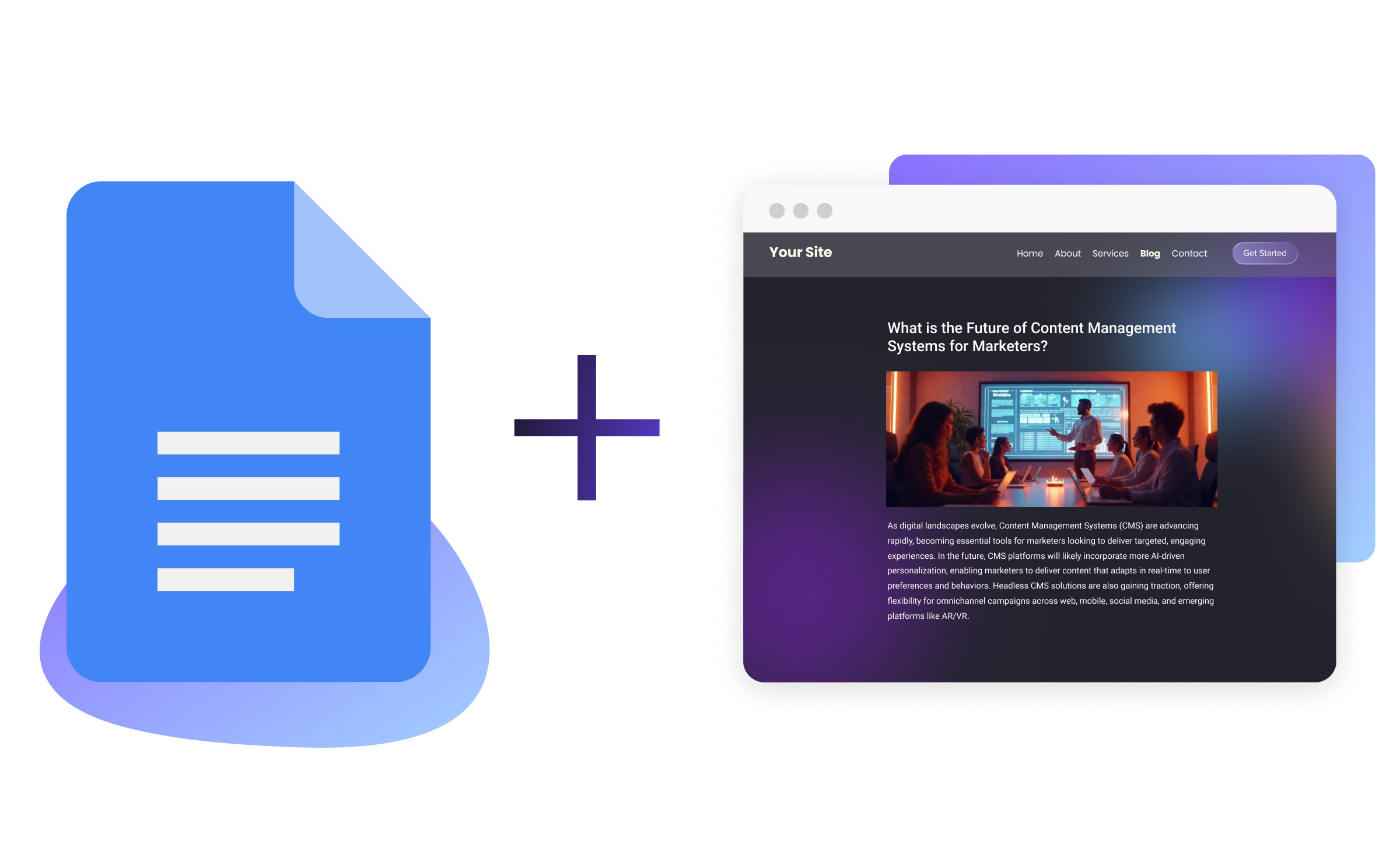Credibility Through Collaboration: Re-Envisioning Harvard University's Homepage
Image

In a recent webinar Aaron Baker, Associate Director of Content Strategy for Harvard University Public Affairs and Communications, and Kyle Unzicker, Creative Director at Modern Tribe, walked through how they collaboratively transformed Harvard University's homepage.
The living homepage showcases compelling stories, deep insights, and rich, interactive media that is ever-changing and always inspiring. It is a radical departure from the norm.
Harvard University's Public Affairs and Communications team approached creative design agency Modern Tribe with a complex ask: Redesign the prestigious university’s homepage to be more engaging and appealing to thousands of unique visitors, serving the needs of future students, current students, alumni, faculty, and researchers across 12 different schools while still retaining the Harvard brand.
Atop the complexity of opposing user needs and countless different journeys, the agency also faced monumental expectations. This is the Harvard homepage — the entranceway to one the most well-known and -respected institutions in the world. Simply rearranging content blocks and restructuring the navigation weren’t going to cut it.
What’s more, the redesign needed to go far deeper than the cosmetic. Harvard’s Public Affairs and Communications (HPAC) team needed a simpler way to publish and manage content. They were striving to change the look and feel of the homepage frequently, updating the site according to unifying themes such as climate change, Black Lives Matter, or Housing Day for new students.
Between them, HPAC and Modern Tribe landed on a living homepage that changes entirely — according to what's happening on campus or in the world. It's an experience far removed from traditional university homepages, which are typically consumed by navigation needs for sending people to the correct school or cohort. Harvard.edu still achieves that wayfinding, however users are likely to learn something new, feel something different, engage with something inspiring on their way to where they're going. This timely content is called In Focus, and it captures the minds and hearts of the Harvard community collectively.
Understanding the Homepage’s Universal Appeal
To the average person, Harvard is a prestigious school. To Aaron Baker, it’s something much more complex — especially from a content standpoint. “People think about Harvard as a single college, because that’s the undergraduate experience you read about or see in movies, but it’s really one of 12 different schools,” he says. “Harvard has about 36,000 students in total, and it’s also the fifth largest employer in the Commonwealth of Massachusetts.”
We needed to simplify something that’s super complex and make it simple for users … Our answer to this problem was to sort of take a step back and analyze the situation and our users, and consider where our homepage fits into all of this.
- Aaron Baker, Associate Director of Content Strategy at HPAC
With this in mind, the new homepage needed almost universal appeal — a tall order. Not only that, but Harvard’s high-profile status in the world of academia and beyond makes it a destination for tens of thousands of visitors each day. For the content strategy team, pressing the publish button on a new piece of content is anxiety-inducing enough. Now, factor in the anxiety that comes with creating a completely new homepage with universal appeal. Not such a small task, right?
Working together, Aaron and Kyle Unzicker, Creative Director at digital agency Modern Tribe, asked a simple question: What’s the driving purpose of a homepage? Instead of jumping into an iterative process, the two spent the first phase of the project interviewing focus groups about what they expected from the main face of Harvard’s digital presence.
“It’s a struggle WebOps teams all have in common, right? We needed to simplify something that’s super complex and make it simple for users,” says Aaron. “But the way in which you do that can vary. Our answer to this problem was to sort of take a step back and analyze the situation and our users, and where we fit into all of this.”
The feedback they garnered helped both teams to plan the redesign, including the WebOps strategy needed to assemble something so hugely important, yet so broadly defined. “Through this process of redesigning our website, we learned a lot about what users expected us to have. And that was really important,” says Aaron.
Throwing Convention Out, Embracing Change
The prevailing demand across survey participants was a need for simplicity and engagement. Regardless of what they came to the site for or what they expected to take away from it, users wanted to find something valuable. In short, they wanted the Harvard.edu homepage to match the prestige, authority, and thought leadership of the institution it represented. It needed credibility.
“We tested everything that we thought was good with users to verify that this is what they meant by ‘best-in-class’,” says Aaron. “We had all of our assumptions, and we put all of this through the wringer in a new UX and a new way of writing about Harvard in our website copy. We did all of these iterations, and we arrived at this idea of a homepage takeover, where we just threw everything out!”
The idea was almost cathartic. Why settle for a conventional homepage when trying to represent a globally respected institution like Harvard? Instead, the concept of a living homepage came to fruition. A homepage with compelling stories, deep insights, and rich, interactive media that was ever-changing, always relevant, and undeniably inspiring. It was a radical departure from the norm.
“Change is hard. But as digital content professionals, I really believe that we have to be confident in our decision making,” says Aaron.
Aligning WebOps Practices and Content Strategy
Harvard’s living homepage created a new challenge. To maintain the credibility it created, the homepage needed to work intuitively for those updating and adapting it. For the team at Modern Tribe, it was an opportunity to deploy proven WebOps principles, to optimize both form and function of the homepage.
“The Harvard homepage has always had great content. The challenge the HPAC team had was lacking the technological and design elements necessary to achieve the captivating storytelling necessary for this new homepage,” says Kyle. “So, in addition to having patterns available that would support different kinds of content types, we wanted to provide patterns that supported visually engaging multimedia options.”
In effect, we really didn't make a new homepage — there's literally a new homepage every single week!
- Kyle Unzicker, Creative Director at Modern Tribe
Modern Tribe channeled its focus into building the living homepage in a way that supported constant, seamless updates. It maintained familiar content patterns for WordPress users, such as cards, banners and blocks, to preserve the familiarity and functionality the content team was used to. To expand on this foundation, Modern Tribe added more robust content patterns with pre-formatted structures conducive to everything from news to images.
Kyle and the design team also went further, to bring dynamic appeal to each type of content published on Harvard’s homepage. The team made publishing even simpler using the Wordpress REST API, which allowed quick publishing of news content from the Harvard Gazette website through only pasting a URL. Flexible layout options allowed customization for each block of content published while image optimization and auto-scaling made every piece of visual media ideal in its placement. The result is a site that’s able to evolve — all while remaining distinguished.
“In the end, what we were trying to provide is a way for the HPAC team to not only refresh their website as it is, but give them tools to continue to refresh it over time,” says Kyle. “In effect, we really didn't make a new homepage — there's literally a new homepage every single week!”
By supporting the content strategy through a WebOps approach, Modern Tribe was able to also realize the purpose and vision for the homepage itself. It distinguished each type of content displayed on the page all while preserving the form and function to support publishers and readers alike.
Establishing Credibility for the Harvard Homepage
There’s no doubt that Harvard’s homepage redesign wouldn’t have been possible without tight coordination and free-flowing creativity between the talented teams at HPAC and Modern Tribe, as well as keeping a focus on the bigger picture of the new homepage — namely, its universal appeal.
Kyle’s team used Pantheon as the reliable, stable, and secure backbone essential for hosting Harvard’s WordPress-based homepage, then employing WebOps best practices to keep ahead of the curve. This meshed well with Aaron’s team, who provided the robust content strategy backed by research and user testing, to ensure the homepage delighted its visitors and held universal appeal to thousands of visitors every day, from 12 unique schools.
The symbiosis between WebOps and content strategy, as well as the collaboration between Aaron’s and Kyle’s teams, sheds light on a trend that’s becoming increasingly important. To bring credibility to a project — especially one as high-profile as Harvard's homepage — takes confident coordination between all parties involved. Moreover, it takes a focus on the bigger picture, with everyone doing their part to validate the larger vision.
How do we address the ever-evolving (and ever-raising) bar of establishing credibility and making an impact on the web? What does that look like over the next decade? Change is the only constant, which means that WebOps practices need to align all contributors on a project, then channel their concerted efforts toward a common, specific purpose that benefits all.
“We really tried to set them on the path to establishing Harvard.edu as a credible source — a credible representation of Harvard as the organization and a credible representation of what people expect when they go to the website,” says Kyle.


